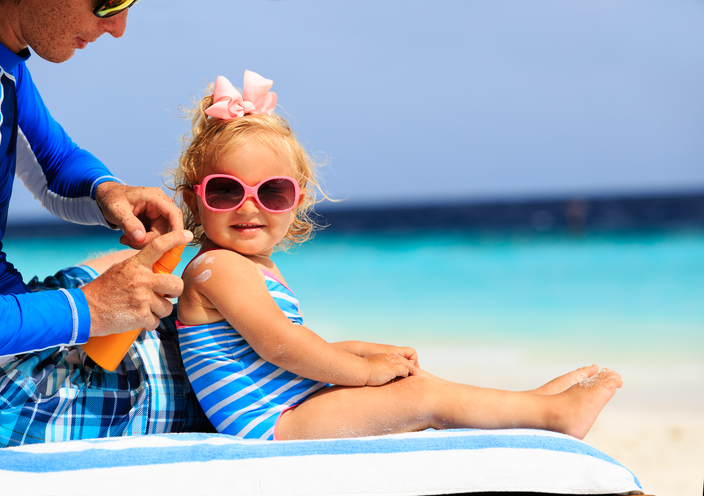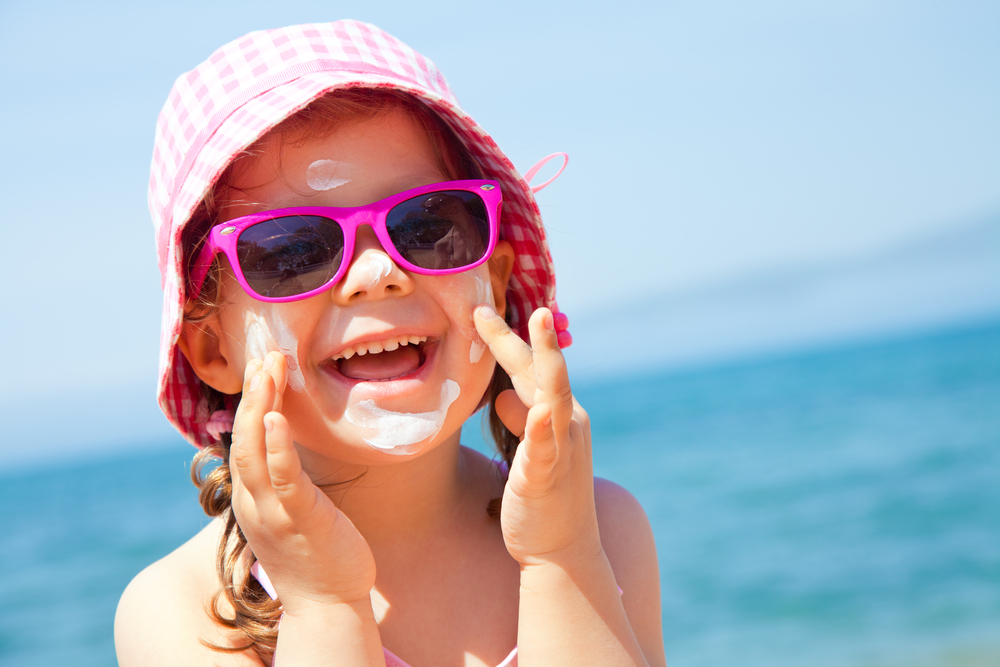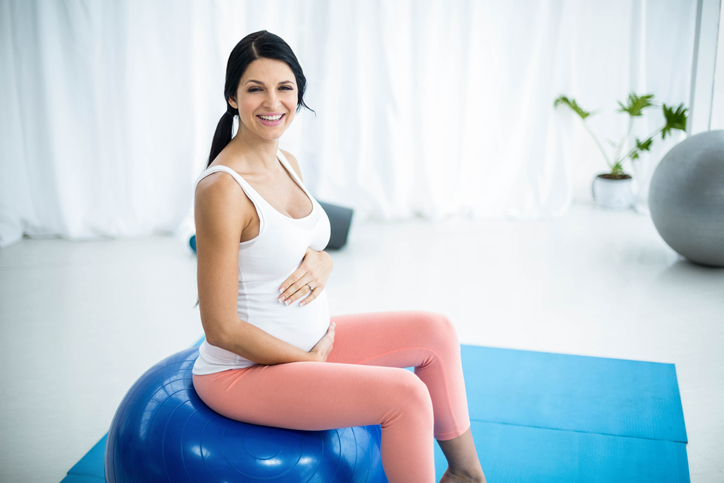Worried about whether your sunscreen is safe for kids? You should be!
We know you want to protect your kids from damaging burns, but you also want to protect them from the harmful chemicals that can be found in some kids’ sunscreens.
Want to be sure you pick the safest sunscreen for children? Read on to learn which ingredients you need to watch out for…
Keep in mind that sunblock for kids should be a LAST RESORT. You want to keep infants under 6 months of age out of the sun all together!
For older kids, cover them up with UV protectant clothing and bring an umbrella or canopy to the beach so they can build sandcastles in the shade.
Also, stay inside during the hottest part of the day and always protect eyes with UV protective sunglasses.
RELATED: Family Beach Essentials – Your Ultimate Packing List!
Safest Sunscreen For Children
For those times when sun exposure can’t be avoided, choose a sunscreen formula designed specifically for kids.
You want to choose one that protects your child against UVA and UVB rays, also referred to as “Broad Spectrum”. Some sunscreens don’t protect against both.
UVA rays are the ones that get under the skin and are responsible for wrinkling, aging, and skin cancer.
UVB rays are the ones responsible for turning you red and causing a sunburn.
Be sure you check for the Broad Spectrum UVA/UVB wording on the label.
Lucky for moms, the primary ingredients in natural sunscreens (Zinc Oxide or Titanium Oxide) will do the job of protecting against both.
Best Natural Sunscreens For Kids
Look for natural sunscreen brands that don’t contain Phthalates, Parabens, PEG’s (polyethylene glycols), Propylene Glycol, or SLS/SLES.
The two ingredients in particular you want to watch out for are oxybenzone and octinoxate. These are synthetic chemicals that function as endocrine disruptors and have been linked to cancer in some laboratory studies.
They can also impact the nervous system and create harmful free-radicals when exposed to the sun (which…hello, sunscreen is going to be in the sun).
Bottom line, you want to avoid oxybenzone and octinoxate when choosing sunscreen for your family.
Chemical sunscreen is no joke! In fact, Hawaii recently became the first state to pass a bill banning the sale of sunscreen containing oxybenzone and octinoxate because of the damage these chemicals cause coral reefs.
If these sunscreens kill coral, imagine what they can do to you and your kids.
The safest sunscreen for children are ones that use mineral (also called physical) sunscreens which usually contain Zinc Oxide or Titanium Dioxide.
Either one works, but some preliminary studies suggest Titanium Dioxide may be carcinogenic to humans.
While these studies are not yet conclusive, until more research is done, we prefer to use Zinc Oxide products on our kids. Just to be on the safe side.
You may also want to consider whether the Zinc Oxide consists of micronized or nano particles.
There are some concerns that nano particles have a higher photo-reactivity and may generate free-radicals as a result.
So while we’re okay with micronized zinc, we avoid sunscreens that use nano particles (smaller than 100nm).
RELATED: Best Pool Toys And Inflatables For Kids

Lotions Vs. Sprays
Lastly, when it comes to the safest sunscreen for children, we prefer lotions or creams instead of sprays.
While sprays may be more convenient, they don’t cover as well as lotions and creams unless you are super diligent and reapply often. Plus, you don’t want to spray sunscreen on your child’s face because inhaling aerosol isn’t a good idea.
The ingredients in sprays also tend to separate in the bottle, which means you have to shake them all the time. This is too much hassle for us.
That’s why we stick with lotions and creams. They tend to be the safest sunscreen for children because they cover so well.
There are also sunscreen sticks on the market, but some studies indicate that people tend to apply too little sunscreen or miss spots when using a stick, so we avoid those too.
Safest Sunscreen For Children – Do’s and Dont’s
Avoid These Ingredients:
- Oxybenzone
- Octinoxate
- Phthalates
- Parabens
- PEG’s (polyethylene glycols)
- SLS/SLES
- Nano particles (smaller than 100nm)
Look For:
- Infant or Kids Formula
- Zinc Oxide (micronized or non-nano)
- All-Natural or Organic
- Broad Spectrum UVA/UVB Protection
- Lotions or Creams
- SPF of 30+
The Environmental Working Group (EWG) reviewed sunscreens specifically marketed for use on babies and kids and came up with their list of the safest sunscreens for children.
Of all the kids sunscreens that made the list, two favorites stood out to our mom testers, they are below.
Top Rated & Mom Favorite Sunscreen Brands
1. Loving Naturals – Adorable Baby Sunscreen Lotion, SPF 30+
-
Active Ingredient – Non-Nano Zinc Oxide 24.7%
- Natural sunscreens are notorious for not blending in well, but this one is clear so it does. Hallelujah!
2. Badger All Natural Sunscreens, SPF 30+
-
Active Ingredient – Non-nano, uncoated Zinc Oxide 14-18.75%
- Badger has very few ingredients, all of them natural.
- They’ve also made active sunscreens with safe non-nano particles, that stay on for swimming, but don’t feel super sticky and aren’t overly white.
Both these sunscreens work great and give us peace of mind knowing we’re choosing the safest sunscreen for children.
It’s also possible to make your own natural sunscreen right at home. Check out this Absolute Guide To The Best Sunscreen For Sensitive Skin to get the ingredient list and recipe for DIY sunscreen.
RELATED: How Can I Make My Pool Area Safer For Kids?
SHARE how to choose the safest sunscreen for children on Facebook and Pinterest by clicking the buttons below.












